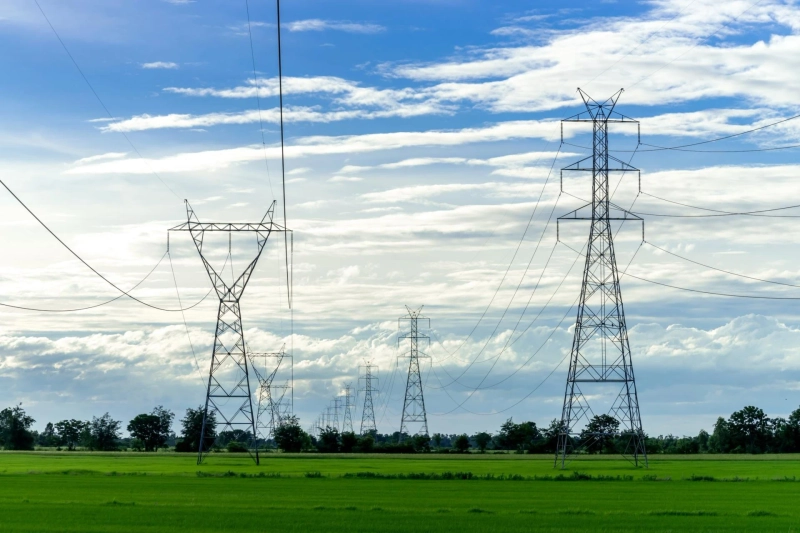The British energy system is in tremendous transition, technologically, structurally, and operationally. While the shift towards renewable generation tends to make all the news headlines, perhaps a less obvious but very important revolution happening in the background is the application of Artificial Intelligence (AI) and automation in the energy system.
This shift is not just a matter of modernisation, it’s a necessity. Decarbonisation deadlines and increasing electricity demand render traditional, manual methods of operating the grid obsolete. We can shift gears and go from reactive modes of operation to smart, responsive, and proactive grid operation using the confluence of automation and AI.
A Smarter Grid for a Complex Landscape
Gone are the days when power supply followed some very linear, vertically integrated system from bulk generation through transmission and ultimately towards the consumers. Power systems today are decentralised, volatile, and filled with uncertainties.
Artificial intelligence is helping cope with this complexity through the possibility of improved forecasting and rapid, data-supported decision-making.
National Grid ESO can now apply artificial intelligence-driven systems in improved forecasting of wind and solar generation, factors that are extremely weather-dependent and which can vary from minute to minute.
These predictive systems sort through massive collections of data from historical generation levels to current weather radar and satellites, and make real-time changes in operating levels. Doing so reduces costly backup generation and boosts grid stability overall.
Automation in Grid Operations
The era of SCADA (Supervisory Control and Data Acquisition) automation has long gone. Advanced control systems now include automated fault detection, real-time load balancing, and adaptive voltage control functions long supplied by humans.
Ever-increasing numbers of Distribution Network Operators (DNOs) are beginning to realise their future as Distribution System Operators (DSOs), and they now must assume a far more active approach towards load management and grid reliability. Automation here is not something you can afford, but something you have to do.
Smart devices in use today, including smart reclosers, line sensors, and voltage optimisers, can respond in seconds or earlier, in certain instances, than when the control room is alerted. They build resilience, reduce downtime, and facilitate greater numbers of Distributed Energy Resources (DERs), including rooftop solar, small wind, and energy storage batteries.
Predictive Maintenance and Asset Health
Artificial Intelligence has been the predictive maintenance game-changer. Unlike traditional practices, replacing parts on a fixed schedule or after failure uses present information regarding substations and transformers in spotting early warning signs. It makes it possible for interventions to take place in time, reduce costs, and eliminate unnecessary breakdowns. This allows network companies to make scheduled repairs or replacements before unplanned disruptions take place and keep expensive assets in operation for longer.
Currently, National Grid Electricity Transmission (NGET) has been trialling AI-powered monitoring systems across parts of its high-voltage network. These systems show promise in being able to identify emergent faults before they become major events.
Demand Flexibility:
Demand Side Response (DSR) extension is another area where automation is making its presence in quantifiable terms. Until now, DSR had been relying on manual coordination and prior arrangements with major energy users. Now, using smart technology, DSR portals can react in real time to price signals or stress events in the grid.
Commercial structures, cold storage warehouses, and electric vehicle charging stations can all be registered in these programmes, enabling dynamic load control and ensuring energy usage is optimised without compromising business operations.
Cybersecurity Considerations
The digital and interconnected grid also opens up new risks, particularly in information security. Some additional systems and devices are connected across the grid. This provides greater opportunities for vulnerability.
Artificial intelligence is also being used in this industry, helping to identify strange activity, notifying potential threats, and isolating some parts of the network if needed. Cybersecurity must keep up with automation. Just as our systems grow smarter, so do our defences.
Looking Ahead
Despite the tremendous force of automation and AI, humans can't be replaced. System engineers, analysts, and operators continue to contribute judgment, expertise, and context, which don't come programmed in algorithms. Its future lies in doing both together.
Artificial intelligence complements but doesn't replace human decision-making and allows for quick, better-informed action. For the UK grid, it means a better-integrated, better-reliable, and better-prepared system for the future ahead in the low-carbon age.
Final Thoughts
The UK grid is not only transforming, but it is also becoming intelligent. With the help of automation and artificial intelligence, we are upgrading towards a responsive, resilient system better equipped for the rising demands of electrification and decarbonisation. It will all depend, though, upon careful execution, sensible regulations, and ongoing collaboration across the industry. Do it right and the UK will be leading the clean generation charge, but it will also be leading the charge in running and operating the grid of the future.

